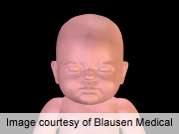High abusive head trauma rates with new coding method

(HealthDay)—Use of new coding algorithms show the highest abusive head trauma (AHT) rates in children < 1 year reported to date, but no significant change in national AHT rates, according to a study published online Nov. 25 in Pediatrics.
Meghan E. Shanahan, Ph.D., M.P.H., from the University of North Carolina at Chapel Hill, and colleagues examined trends in AHT incidence in children <1 year of age between 2000 and 2009 using data from four waves of the Kids' Inpatient Database and annual discharge data and applying a new coding algorithm developed by the U.S. Centers for Disease Control and Prevention. Incidence rates were calculated at the national, regional, and state level.
The researchers found that in the four years of Kids' Inpatient Database weighted data, the CDC narrow and broad coding algorithms identified 5,437 and 6,317 cases, respectively, with average annual incidences of 33.4 and 38.8 cases per 100,000 children <1 year of age, respectively. National rates did not change significantly. There were regional variations, with significant differences in trends in the Midwest and West. North Carolina state data showed wide annual variation in rates, with no significant trend.
"Caution should be used in interpreting AHT trends and attributing changes in rates as being caused by changes in policies, programs, or the economy," the authors write.
More information:
Abstract
Full Text (subscription or payment may be required)
Copyright © 2013 HealthDay. All rights reserved.


















